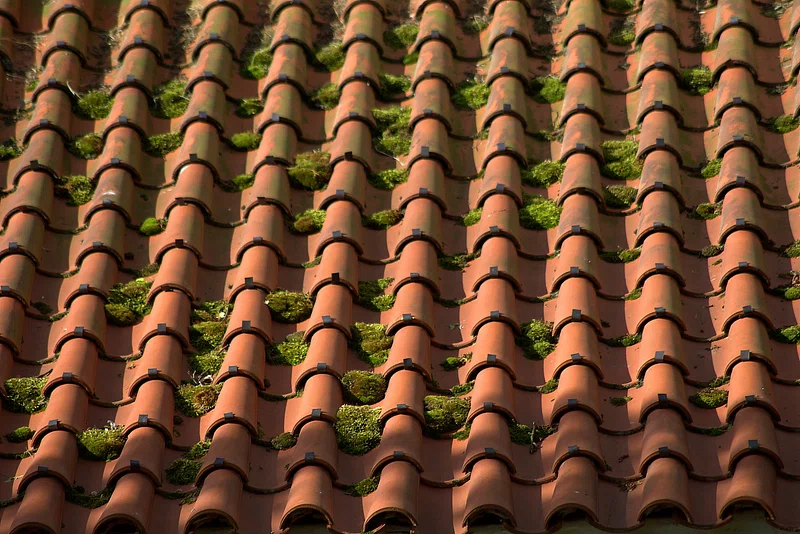How Long Do Tile Roofs Last? What Impacts Their Lifespan?
Tile roofs are a popular choice for homeowners seeking beauty, durability, and longevity. But how long do tile roofs last? Whether you’re considering investing in a tile roof or already have one, understanding its lifespan is essential.
Tile roofs are known for their impressive durability, with lifespans ranging from 50 to 100 years for clay tiles, 30 to 50 years for concrete tiles, and up to 200 years for slate tiles. Proper maintenance and high-quality installation can further extend their longevity. Investing in a tile roof ensures a long-lasting and aesthetically pleasing roofing solution.
In this article, we’ll explore the average lifespan of different types of tile roofs, factors that affect their longevity, signs that it might be time for a replacement, and tips for extending their lifespan. Let’s dive into the world of tile roofs and discover how long you can expect them to last.
Average Lifespan of Different Tile Roofs
Tile roofs come in various materials, each with its unique properties and lifespan. Let’s take a closer look at the three most common types: clay, concrete, and slate.

1. Clay Tiles: The Timeless Choice
Clay tiles have been used for roofing for centuries, and their durability is well-documented. On average, clay tile roofs last between 50 to 100 years, but with proper care, some can exceed a century. These tiles are known for their resistance to extreme weather conditions, making them a popular choice in areas prone to harsh climates.
Why do clay tiles last so long?
- Durability: Clay tiles are incredibly tough and can withstand high winds, heavy rains, and even hail.
- Resistance to Rot and Insects: Unlike wood, clay tiles do not rot or attract insects, which contributes to their long lifespan.
- Low Maintenance: Clay tiles require minimal maintenance, which is another reason they can last so long.
The Mission San Juan Capistrano in California, built in the late 1700s, still boasts its original clay tile roof, demonstrating the impressive longevity of clay tiles.
2. Concrete Tiles: A Modern Marvel
Concrete tiles are a more recent innovation, offering a cost-effective alternative to clay. Typically, concrete tile roofs last between 30 to 50 years, making them a durable and economical choice for many homeowners.
Why do concrete tiles last?
- Strength: Concrete tiles are highly durable and can resist severe weather conditions, including heavy rain and hail.
- Versatility: These tiles can be made to mimic other materials, such as wood or slate, offering aesthetic flexibility.
- Maintenance: While they require a bit more maintenance than clay, concrete tiles still offer impressive longevity.
According to the National Association of Home Builders, concrete tile roofs can last 50 years or more with proper care.
3. Slate Tiles: The Luxury Option
Slate tiles are considered the pinnacle of roofing materials due to their exceptional longevity. A well-maintained slate tile roof can last anywhere from 75 to 200 years, making them an investment that can benefit multiple generations.
Why do slate tiles last so long?
- Natural Stone: Slate is a natural stone, making it incredibly durable and resistant to weathering.
- Fire Resistance: Slate is non-combustible, adding to its longevity and safety.
- Aesthetics: Slate tiles offer a timeless, elegant look that can enhance any home’s curb appeal.
The roof of the Parliament Building in Budapest, Hungary, built in the late 1800s, still features its original slate tiles, showcasing the remarkable longevity of slate roofs.
Extending the Lifespan of Your Tile Roof
While tile roofs are known for their durability, proper maintenance is key to maximizing their lifespan. Here are some practical tips to help you keep your tile roof in top condition:
1. Regular Inspections
Schedule annual roof inspections to catch potential issues early. A professional can identify broken tiles, water damage, and other problems before they escalate. Regular inspections can help extend the life of your roof by addressing minor issues before they become major repairs.
2. Cleaning and Maintenance
Keep your roof clean by removing debris like leaves and branches that can trap moisture and cause damage. Use a gentle cleaning solution and avoid pressure washing, which can crack tiles. Cleaning your roof regularly helps prevent the buildup of moss and algae, which can deteriorate the tiles over time.
3. Repairs and Replacements
Replace damaged tiles promptly to prevent leaks and further damage. It’s often possible to replace individual tiles without affecting the rest of the roof. Timely repairs ensure that minor issues don’t lead to significant problems down the line.
4. Professional Help
Hiring a professional roofer for maintenance and repairs ensures the job is done correctly and safely. They have the expertise to spot and fix issues that might go unnoticed by the untrained eye. Professional maintenance can significantly extend the lifespan of your roof.
Signs Your Tile Roof Needs Replacement
No roof lasts forever, and knowing the signs of a failing tile roof can save you from costly repairs. Here are some red flags to watch for:
1. Cracked or Broken Tiles
While one or two broken tiles might not be a big deal, widespread damage indicates it’s time for a replacement. Cracked tiles can allow water to seep into the underlayment, leading to more significant issues like leaks and structural damage.
2. Water Leaks
Leaks inside your home, especially after rain, can signal significant roof damage. Check your attic and ceilings for water stains. Persistent leaks can cause mold growth and damage to your home’s interior, necessitating a roof replacement.
3. Sagging Roof
A sagging roof suggests structural problems that need immediate attention. This is often a sign that the underlying support system is failing, which can compromise the integrity of your entire home.
4. Mold and Mildew
Excessive mold and mildew growth on your roof or in your attic can indicate moisture problems, which might mean it’s time for a new roof. Mold and mildew can pose health risks to your family and indicate that your roof is not adequately protecting your home.
5. Increased Energy Bills
If you notice a sudden spike in your energy bills, your roof might be to blame. Poor insulation or leaks can cause your heating and cooling systems to work harder, leading to higher energy costs.
6. Age of the Roof
If your roof is nearing the end of its expected lifespan (e.g., 50 years for clay or concrete, 100+ years for slate), it’s wise to start planning for a replacement. Older roofs are more likely to have hidden issues that can lead to significant problems.
Factors Affecting the Lifespan of Tile Roofs
Several factors can influence how long your tile roof lasts. Understanding these can help you take better care of your roof and make informed decisions about maintenance and replacements.
- Material Quality: The quality of the tiles themselves is crucial. High-quality clay, concrete, or slate tiles will naturally last longer than cheaper alternatives. Investing in quality materials upfront can save you money in the long run.
- Installation Quality: Proper installation by experienced professionals ensures your roof is well-supported and can withstand environmental stressors. Poor installation can lead to issues like leaks, tile slippage, and reduced lifespan.
- Climate and Weather Conditions: Extreme weather, such as heavy snowfall, hail, or high winds, can shorten your roof’s lifespan. Tile roofs generally fare well in various climates but may require extra care in harsher conditions. Regular inspections and maintenance are especially important in areas with severe weather.
- Maintenance and Upkeep: Regular maintenance, including inspections, cleaning, and repairs, can significantly extend your roof’s lifespan. Neglecting maintenance can lead to premature aging and costly repairs. Simple tasks like cleaning gutters and removing debris can make a big difference.
- Roof Pitch: The slope of your roof can affect how well it sheds water and resists damage. Steeper roofs generally shed water more effectively, reducing the risk of leaks and water damage.
- Ventilation: Proper ventilation helps regulate temperature and moisture levels in your attic, preventing issues like mold growth and ice dams. Good ventilation can also improve your roof’s energy efficiency and overall lifespan.
Conclusion
So, how long do tile roofs last? With the right care and maintenance, clay, concrete, and slate tile roofs can serve you for decades, if not centuries. By understanding the factors that affect their lifespan and taking proactive steps to maintain them, you can ensure your tile roof remains a beautiful and durable part of your home for years to come.
Remember, a well-maintained roof not only protects your home but also enhances its value and curb appeal. If you’re ever in doubt about the condition of your tile roof, don’t hesitate to contact a professional for advice and assistance.
Invest in your tile roof today, and enjoy the benefits of a stunning, long-lasting roof for many years to come! With proper care, your tile roof can become a lasting legacy for your home, providing beauty and protection for generations.

